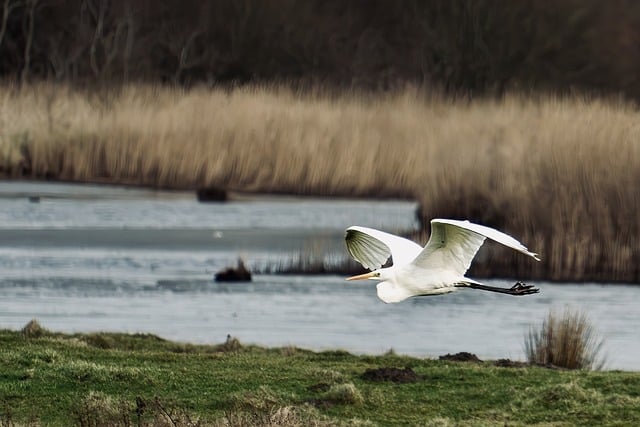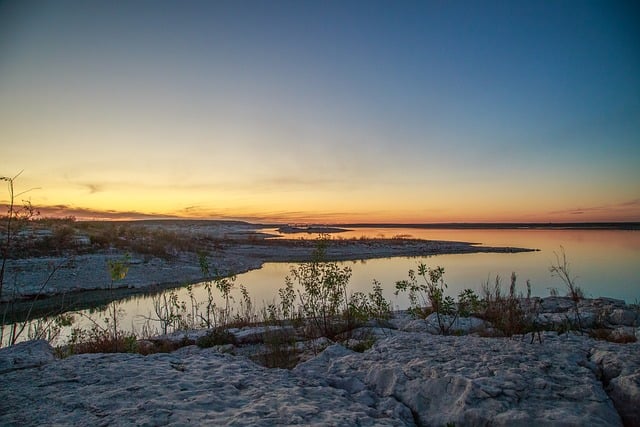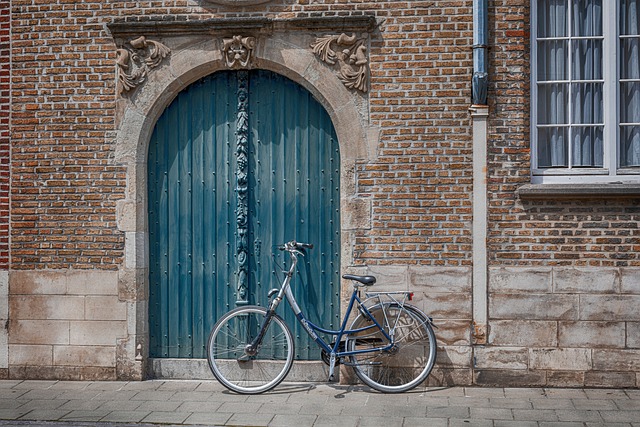
Flashlights are crucial tools for outdoor guides and instructors, serving as reliable sources of illumination that can significantly enhance safety and the effectiveness of educational experiences. When selecting a flashlight, durability, waterproofing, shock resistance, and high-quality LED technology are essential features to ensure longevity and performance in various conditions. Adjustable brightness settings help manage battery life and adapt to different lighting needs, while advanced features such as strobe functions and SOS signals add to their utility as safety tools. A comprehensive Flashlight Protocol should be established for outdoor instruction, encompassing the proper handling, maintenance, and emergency use of flashlights to maximize their benefits in both routine and unexpected situations. By incorporating this protocol into their teaching arsenal, instructors can provide a safer, more enriching learning environment for their students.
When darkness falls on an outdoor expedition, the right flashlight becomes an indispensable tool for guides and instructors. This article illuminates the critical role of flashlights in enhancing hands-on learning experiences in natural environments. We’ll explore essential features that make certain flashlights superior for fieldwork, discuss the importance of battery life and lumen output for extended excursions, and guide you through selecting the most suitable type of flashlight for different outdoor scenarios. Additionally, we’ll delve into innovative technologies in modern flashlights and their impact on safety and effectiveness in outdoor education protocols. Understanding these aspects ensures that outdoor guides and instructors have a reliable light source, transforming nighttime instruction from challenging to clear, bright, and safe.
- Understanding the Role of Flashlights in Outdoor Instruction
- Key Features to Look for in a High-Quality Flashlight for Fieldwork
- Battery Life and Lumens: Ensuring Durability and Brightness for Long Excursions
- Types of Flashlights: Choosing the Right Tool for Specific Outdoor Scenarios
- Best Practices for Using Flashlights in Diverse Environmental Conditions
- Innovative Technologies in Modern Flashlights and Their Benefits for Outdoor Guides and Instructors
- Creating a Flashlight Protocol for Safety and Effectiveness in Hands-On Outdoor Learning
Understanding the Role of Flashlights in Outdoor Instruction

Flashlights serve as indispensable tools for outdoor guides and instructors, enhancing both safety and instructional effectiveness in a variety of environments. In low-light or nighttime settings, a reliable flashlight allows educators to illuminate paths, demonstration areas, and points of interest, making it easier for students to follow instructions and navigate terrain safely. The right flashlight can transform a dark trail into a clear educational space, enabling learners to observe natural phenomena, practice outdoor skills, or understand environmental impacts without compromising their visibility.
Moreover, flashlights for outdoor guides and instructors are designed with durability and functionality in mind. They often feature high-intensity LEDs that provide bright, focused beams over long distances. These lights are constructed with materials like aircraft-grade aluminum or heavy-duty plastics, ensuring they can withstand the rigors of outdoor use, from moisture and dust to accidental drops. Additionally, many come with various light modes, including red or green LEDs that preserve night vision while providing adequate illumination for tasks such as map reading or wildlife observation. Instructors who utilize these advanced flashlights enhance their teaching capabilities, making learning experiences in the wild both effective and memorable.
Key Features to Look for in a High-Quality Flashlight for Fieldwork

When selecting a flashlight for hands-on outdoor instruction, durability and reliability are paramount, as these tools often face challenging environments. A high-quality flashlight should be constructed with robust materials like aircraft-grade aluminum or high-impact plastic to withstand drops, bumps, and the rigors of fieldwork. It’s essential to choose a model that offers a rugged design, ensuring it can endure the elements without compromising performance. Additionally, the flashlight should feature a secure lockout mode to prevent accidental activation during transportation or storage, preserving battery life when it’s most needed.
For outdoor guides and instructors, lumen output is a critical specification. A high lumen count is necessary for illuminating dark environments or signaling in emergencies. Look for flashlights that offer an adjustable beam focus, allowing the user to switch between a wide floodlight for close-up tasks and a narrow spotlight for distant objects or trail navigation. Moreover, a long-lasting battery with high energy density, such as rechargeable lithium-ion, will ensure the light remains operational during extended instructional sessions or overnight expeditions. It’s also beneficial to have multiple lighting modes—high, medium, and low—to manage power usage according to the task at hand and extend the flashlight’s operational time when battery conservation is key.
Battery Life and Lumens: Ensuring Durability and Brightness for Long Excursions

When venturing into the wilderness for hands-on outdoor instruction, reliability in lighting is paramount to ensure safety and clarity. Flashlights designed for outdoor guides and instructors must prioritize battery life, as prolonged excursions often take individuals into remote areas where recharging options are scarce. High-lumen flashlights offer intense brightness necessary for various tasks, from illuminating trail paths to intricate tasks that require a focused beam. The lumens output is not the sole factor; the efficiency of the light source and the design of the flashlight’s body contribute significantly to its overall performance. A flashlight with a long battery life, typically provided by rechargeable batteries or energy-efficient LED technology, is crucial for maintaining consistent illumination throughout the adventure. Additionally, features such as adjustable brightness settings can extend battery life by utilizing lower lumens when full intensity is not required. For outdoor guides and instructors, the best flashlights combine high lumens with advanced energy-saving technologies, ensuring that their light source remains a dependable companion, ready to reveal the wonders of the natural world or assist in any unforeseen situation. In conclusion—though not explicitly stated—selecting a flashlight with superior battery life and adequate lumens is essential for outdoor guides and instructors who rely on clear visibility and durable equipment during their instructional expeditions.
Types of Flashlights: Choosing the Right Tool for Specific Outdoor Scenarios

When selecting a flashlight for hands-on outdoor instruction, instructors must consider the types of environments they’ll be navigating and the specific needs of their activities. High-intensity discharge (HID) flashlights offer intense illumination, ideal for large groups in open areas where visibility over long distances is crucial. These are excellent for night navigation exercises or to highlight objects in low-light conditions. For tasks that require a more precise beam, LED flashlights provide a focused spotlight, which can be beneficial when teaching skills such as map reading or signal identification. Their durability and long battery life make them suitable for multi-day excursions where reliability is key.
Furthermore, rechargeable flashlights with LED technology are a sustainable choice for outdoor guides and instructors committed to eco-friendly practices. These flashlights often have adjustable brightness settings, allowing users to conserve power during less demanding activities or increase lumens when needed. Waterproof and impact-resistant models are essential for unpredictable weather conditions or rough terrain, ensuring that the learning experience remains uninterrupted. Regardless of the chosen flashlight type, it’s important to prioritize user ergonomics; a comfortable grip and lightweight design will enhance the user’s experience and effectiveness during hands-on instruction in various outdoor scenarios. Flashlights For Outdoor Guides And Instructors should be chosen based on the specific demands of the environment and activity, ensuring that both the instructor and their students can navigate safely and efficiently.
Best Practices for Using Flashlights in Diverse Environmental Conditions

When instructing outdoor enthusiasts, flashlights serve as indispensable tools for both education and safety in diverse environmental conditions. Flashlights for outdoor guides and instructors should be durable and reliable, with high-quality LED bulbs that provide bright, focused light. The first best practice is to select a flashlight that suits the specific environment: waterproof models for wet terrains, shock-resistant ones for rocky trails, and those with long battery life for extended activities or unexpected emergencies.
Outdoor instructors should also familiarize themselves with the various lighting modes their flashlights offer. Utilizing low-intensity settings in camp environments can preserve night vision, while high-beam options are crucial for navigating challenging paths or signaling for help. Additionally, guides should teach students about proper flashlight handling to prevent mishaps. This includes securing the flashlight when not in use to avoid accidental drops or activation, which could lead to unintended battery depletion. Instructors must also instruct on the importance of carrying spare batteries and ensuring that all parts of the flashlight are tightly sealed if it’s waterproof, to prevent moisture from damaging the device. By following these best practices, outdoor guides and instructors can effectively use flashlights to enhance their instructional activities and ensure both their own and their students’ safety in a variety of conditions.
Innovative Technologies in Modern Flashlights and Their Benefits for Outdoor Guides and Instructors

Modern flashlights have evolved significantly, integrating innovative technologies that offer substantial benefits to outdoor guides and instructors. These advancements provide enhanced visibility, durability, and functionality that are crucial for navigating various terrains and conditions. LED technology has revolutionized flashlights for outdoor guides and instructors, offering brighter and more energy-efficient lighting. The high lumen output and long battery life of these lights ensure that instructors can illuminate dark environments effectively without the constant worry of power depletion. Additionally, LEDs are shock-resistant and have a longer lifespan compared to traditional bulbs, which is particularly advantageous in the rugged outdoor setting where flashlights may be dropped or subjected to vibrations during use.
Furthermore, many modern flashlights come with features such as adjustable brightness settings, allowing users to conserve battery life when full illumination isn’t necessary and to enhance visibility in different situations. Rechargeable batteries are now the norm, reducing the need for disposable ones and minimizing environmental impact. Some models even feature programmable modes tailored to specific activities, such as camping, hiking, or survival scenarios. Integrated USB ports enable charging from power banks or other portable sources, ensuring that guides and instructors can maintain a consistent light source throughout their expeditions. The inclusion of strobe functions and SOS signals adds to the safety features, making these flashlights not just tools for lighting but also emergency signaling devices. These technologies make modern flashlights indispensable for outdoor guides and instructors, providing them with reliable, versatile, and sophisticated lighting solutions for their hands-on instructional needs.
Creating a Flashlight Protocol for Safety and Effectiveness in Hands-On Outdoor Learning

When conducting hands-on outdoor instruction, safety and effectiveness are paramount. A well-crafted Flashlight Protocol can significantly enhance both aspects for guides and instructors utilizing flashlights for outdoor learning environments. This protocol should begin with selecting high-quality flashlights designed specifically for outdoor activities. These flashlights, known as ‘Flashlights for Outdoor Guides and Instructors,’ are built to withstand harsh conditions and provide reliable lighting. They should be waterproof, shock-resistant, and have a durable design to ensure they operate when needed most.
Instructors must also be trained in the correct techniques for using these flashlights. This includes understanding the different lighting modes available—high, medium, and low beam settings—to conserve battery life and maintain visibility under various conditions. The protocol should emphasize the importance of regular maintenance checks to ensure each flashlight is fully charged or equipped with fresh batteries before an outing. Additionally, instructors should be familiar with emergency procedures involving the flashlights, such as signaling for help or navigating in low-light environments. By adhering to a Flashlight Protocol tailored for outdoor education, guides and instructors can significantly improve the safety and effectiveness of their instructional activities, ensuring that learners receive the best possible hands-on experience in an outdoor setting.
When equipping for hands-on outdoor instruction, flashlights for outdoor guides and instructors serve as indispensable tools. A high-quality flashlight, tailored to the specific demands of fieldwork, becomes a beacon in the wilderness, ensuring that both educator and student can navigate, observe, and learn under various conditions with clarity and safety. Selecting a flashlight with optimal battery life and brightness is crucial for extended excursions; these features guarantee reliability and sufficient illumination when it matters most.
Understanding the diverse scenarios that outdoor education presents—from dense forests to arid deserts—demands an informed choice in lighting equipment. The best practices for using flashlights effectively across different environments are essential knowledge for outdoor professionals. With innovative technologies advancing, today’s flashlights offer more than just light; they provide a range of benefits, from durability and adaptability to user-friendly features that enhance the educational experience.
In conclusion, the integration of modern flashlight technology into outdoor instruction is transformative. It not only improves learning outcomes but also ensures the safety and effectiveness of hands-on education in natural settings. Flashlights for outdoor guides and instructors are more than just tools; they are integral to the outdoor educational experience, providing a clear and steady guide through the complexities of nature’s classroom.







